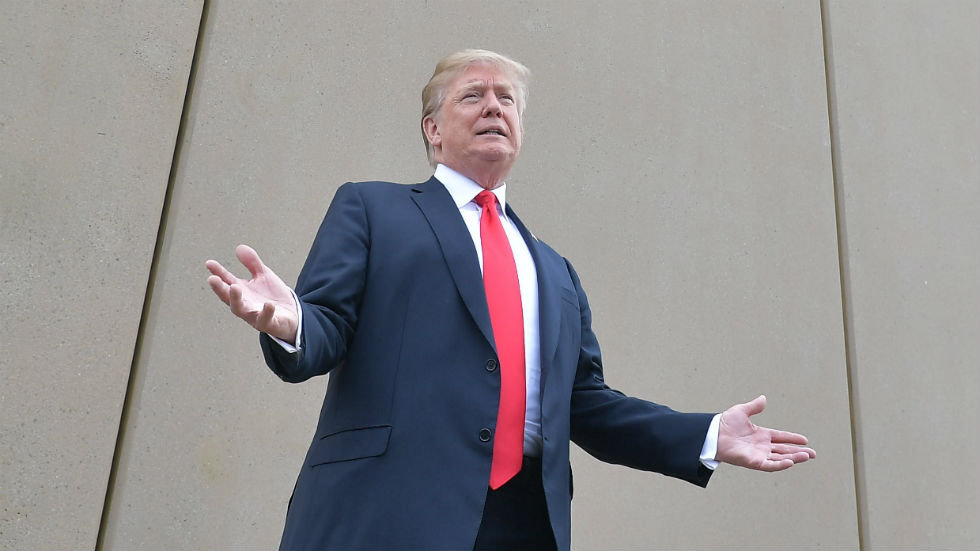Volatility traders must be doing well so far in August. Everything is going their way. To be sure, the world all of a sudden doesn’t look so good. Angst rules, and we are in the process of experiencing what kind of price dislocations this brings with it. Recession fears have been triggered by the inversion of the 2/10-year yield curve, and the media is amplifying the unease. The stock market is wavering. The risk-free is being piled into. Crude is getting hammered. And gold is on a roll.
You can’t really blame investors running for the doors. They have mostly had a decent year, and even though it’s still early on in the game, performances are being locked in. The dreadful market scenario will no doubt last for a while longer, and further volatility will likely be upon us for a few more days or weeks. To be brave and open your hand to a falling knife probably makes little sense. People are on holiday anyway. Let the slump work its way through.
But is this the end of the big bull market? I doubt it. Yes, economic weakness is becoming ever more visible, but apart from Europe, I think the picture isn’t that bad. We will still cough up a half-decent growth number in America, trade war or not. China and India are growing at 6%+. Even Japan seems to experience an economic blip. Such a backdrop is hardly a disaster scenario. The curve inversion admittedly doesn’t bode well for the future, but it is also the lack of easing by the Fed that has the curve distorted.
Jay Powell will come around despite the uncongenial pokes by Donald Trump, which will put pressure on the short end and bring the curve back in line. Besides, the run on the long end has had its merits but will shortly come to an end. My target has always been 1.50% in 10 years, and not that I am losing courage, but I believe the market will leave it at that. The incredible rally of 175bp, from 3.25% to 1.50%, has priced in a lot of grievances about the US economy and monetary policy expressed here in the past 12 months.
Risk markets and the stock market in particular will probably more specifically have to be seen in the context of the election year. Trump knows that, for him to be re-elected, he needs an okay economy, a stable job market, and rising stock prices. That is after all what he is running on. The president and his administration will do everything to manufacture a scenario along those lines, whatever it takes. And we have had a sense over the years of what that means.
Trump has pushed the Fed hard, maybe harder than he needed to, as the committee members are likely to come around by themselves. Therein, and rate cuts plus potentially some form of QE being done timely, lies support for the economy as well as the stock market. Investors may be shivering in their pants now, but when the Fed does its thing, the mood will swing back and the admiration for the Fed put make it back into the headlines once again. That will be one box ticked.
The second box is concerned with how Trump will handle the trade war from here. Insinuating to have a quick exchange with Xi Jinping directly, as Trump has done yesterday, will not cut it but rather irritate more. But the president knows he needs to fix this, no matter what the hawks breathing down his neck try to dictate to him, else his electorate will truly suffer and re-election chances wane. A first step may be the deferral of tariffs, to be seen as gracious by the Chinese but in essence a move to protect US consumers.
The flip-flopping by Washington over the past year has certainly not helped, however, and Beijing seems to have resorted to a course that is much harder-lined than before, with the ban on farm product imports for example. They know where it hurts, and they are pressing along, regardless of the short-term cost incurred to them. Also, teeth were bared last night and retaliation threatened if Trump were to go through with his 10% tariffs.
But the Chinese are not necessarily one for confrontation. They know Trump wants his win and will be ready to cut a deal if it is digestible. Concessions they will make but probably fewer now. They must also have a sense of Trump’s manoeuvring regarding timing. A lot of nasty back and forth is still to be expected until the end of the year or early 2020 for any deal to have the biggest visibility and impact on his campaign.
And then there is Hong Kong, by some of the pundits viewed as one of the key risks for markets. To be sure, there is nothing to be trivialised here. The city is shaken, probably most in its modern history, and the government is not willing to give an inch. Their strategy is to sit the protests out, apparently with the blessing of Beijing. It is surprising to see that Trump appears to let that one go, unlike his political rivals. At the same time, we have no idea whether or how much Washington has been meddling behind the scenes.
So, looking at the screens it looks ugly, but it might well be not that ugly. The volatility in markets is more or less collateral damage for what Trump wants to achieve politically. If one has the guts to dive through this, there is money to be made. Wait for more fall-out in stocks and collect on the cheap, sell Treasuries as there isn’t much more to be gained, keep holding that gold as it has only one way to go, and stick to the dollar versus other fiat currencies as there is still nothing that can challenge it.
